11 Things to Do After Adopting a Dog
Every year, 6.3 million pets end up in shelters, nearly 3.1 million of which are dogs. This highlights the urgent need for caring people to adopt them.
Adopting a dog is exciting and essential. It brings many duties and chances for fun for both you and your pet. However, preparing for what comes next is necessary to ensure you both enjoy a happy life together. Preparing is key to giving you and your new dog a great start together.
To help with this, here is a comprehensive guide for the top 11 things to do after adopting a dog to give your new pet a loving and happy home.
1. Creating Your Dog's Safe Haven

Adopting a dog, especially a rescue dog, is like welcoming a new family member. Like any other member, your new pup needs its own space in a new environment—a sanctuary where it can retreat when it requires quiet time or rest.
A dedicated pet room or a comfortable crate can serve as a personal safe space for your rescue dog, enhancing their sense of security and facilitating their adjustment to their new environment. Your local shelter staff will recommend this as well.
Now, what makes an excellent dog haven? Consider different comfortable dog bed options or even creating a pet nook. These provide physical comfort and make your dog’s space feel inviting.
However, it’s not just about the physical space. The atmosphere matters, too. Maintaining a quiet and consistent environment for at least the first week is beneficial. This is to help your new dog acclimate without feeling overwhelmed,
2. Setting up House Training Essentials
Our canine companions need to be house-trained, too. And yes, even adult dogs from the shelter might need a little house training refresher. So, where do you start?
Establish a routine of taking your new dog outside frequently to go to the bathroom, ideally every two hours. A consistent schedule helps regulate their bathroom needs and helps them discern the appropriate times to go.
Training doesn’t stop at regular bathroom breaks. It’s also about forming good behavior. Use immediate and varied rewards, consistent verbal commands, and transitional reinforcement to maintain motivation and clarity throughout training. And remember, accidents will happen. React to these without punishment but with positive reinforcement and increased opportunities for outdoor breaks to encourage the correct behavior.
3. Transitioning Your Dog's Diet
Imagine being suddenly introduced to a whole new cuisine. Sounds exciting, but it might not sit well with your stomach. The same goes for your newly adopted dog. Introducing your new rescue to a new diet gradually can prevent upset stomach or diarrhea. Here’s how to do it:
- Start by mixing 25 percent new food with 75 percent old food.
- Increase the new food percentage every other day.
- Stick to this plan to ensure a smooth transition for your furry friend.
The shelter residents enjoyed a meal together, savoring the flavors and sharing stories over their plates of food. Later, you and the other residents cleaned the kitchen and dining area, grateful for the nourishment and camaraderie.
Selecting the right food is equally important. Here are some tips to help you choose the right food for your dog:
- Choose quality dog food tailored to your dog’s age, breed, and dietary needs.
- Monitor their reaction to the new diet.
- Mix wet food with kibble or warm water to aid the transition, particularly from moist to dry food.
- Be firm about not offering treats or table scraps during this period to ensure consistency.
4. Selecting the Right Toys
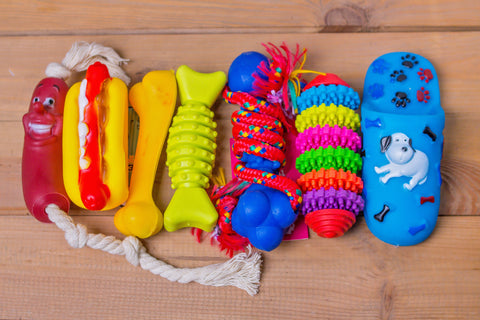
Playtime is an excellent opportunity to bond with your new dog and provide them with the physical and mental stimulation they need. Toys play a crucial role in this. They facilitate diverse play activities, provide necessary exercise, and foster a strong bond between you and your new pet. But with many dog toys available in the market, how do you choose the right ones?
Start by identifying what type of play your rescue dog enjoys. Do they like chewing on things or prefer disassembling their toys? Indestructible toys are great for chewers, while tear-apart toys are perfect. Toys that challenge the dog, like play tunnels and snuffle mats, stimulate their mind and body. In contrast, chew and treat-dispensing toys can address behavioral issues such as boredom or separation anxiety.
5. Establishing a Daily Routine
Imagine living a life without any routine or structure. It would be chaotic, wouldn’t it? Dogs feel the same way, too. Daily routines help new dogs understand what to expect, fostering a sense of security and trust with their new family. It also supports a dog’s metabolism, digestive health, and mental and emotional well-being, making it an essential part of your dog’s overall well-being.
Feeding routines should involve feeding at the exact times and places daily, using consistent signals, and ensuring the feeding environment is safe and non-threatening. A routine also encourages pet owners to practice self-care, including regular exercise and healthy sleep patterns.
However, a little flexibility can also be beneficial. Slight changes in the routine can prevent anxiety in the dog and help them understand that small changes are a part of life.
6. Introducing Your New Pup to the Pack
Bringing a new dog home doesn’t just mean welcoming a new family member for you but also the rest of your pack – human family members, other dogs, or even cats. And just like you took time to adjust to the new dog, they would need time, too. The key is to manage the new dog’s space in the household and ensure all interactions with small children or other pets are supervised carefully.
When introducing new dogs to each other, follow these steps:
- Do it on neutral territory, such as outdoors, keeping both dogs on separate leashes.
- Observe and understand each dog’s body language to prevent conflict.
- Reward both pets for displaying calm behavior.
If you have a cat at home and are planning to introduce a new furry friend, follow these steps for a smooth introduction of a new dog to your resident cat. Start by initially keeping them apart and letting them adjust to each other’s scent and presence before direct contact. Remember, patience is key during these initial interactions.
7. Finding a Vet and Scheduling a Check-Up
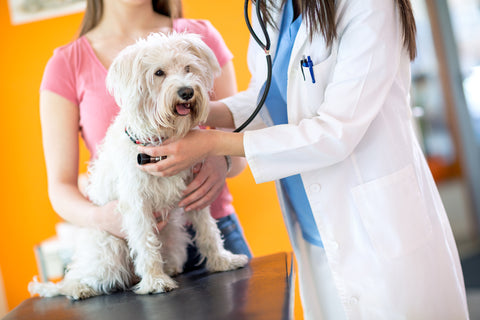
Health is wealth, and the same holds for your new dog! Scheduling an initial vet check-up within a week of adopting your new dog ensures their health and addresses any required vaccines or procedures. This initial visit might include:
- Thorough wellness exam
- Fecal exam for intestinal parasites
- Blood panel to establish a health baseline
Establishing a relationship with a vet right from the start is fundamental to your dog’s well-being, as it ensures a smooth transition and supports long-term pet health. Yearly bloodwork and regular dental check-ups can prevent serious conditions like heart and kidney disease. Also, don’t forget the importance of preventive care, including consistently using preventatives for fleas, ticks, heartworms, and deworming.
8. Building Good Behavior

Training is critical to your new dog’s life—it helps them understand what’s expected of them and how to behave. Establishing clear boundaries and stable expectations from the outset creates a structured environment for the dog.
One effective method is crate training, which can provide a safe space for your pet. Training should consistently be rooted in positive reinforcement. Rewards like high-value treats or praise should encourage good behavior and strengthen the bond.
Every dog is unique, and so is its comfort level with training. Adjust your training based on your dog’s pace and comfort level, considering factors like age, past trauma or neglect, and the time to settle into the new environment. If challenging behavior issues arise, don’t hesitate to seek assistance from a professional trainer. They can significantly impact the dog’s adjustment to its new home.
9. Identification and Safety Measures
When you adopt a dog, you become responsible for their safety. One of the first safety measures to take is ensuring proper identification.
A microchip, a small electronic device implanted under a dog’s skin, provides permanent identification, increasing the chances of a lost dog reuniting with its owner. It can quickly be done during a routine veterinary visit and doesn’t require surgery or anesthesia. Since microchips lack GPS capabilities and thus cannot track location, registering the microchip and routinely updating the contact information becomes a necessary step.
Beyond microchipping, guaranteeing safety at home is also of prime importance. Before bringing your new dog home, you should:
- Stow away harmful items
- Pick up items that shouldn’t be chewed
- Implement dog gates to safeguard certain areas
- Always supervise your dog, especially during the adjustment period
These measures will help protect both your pet and other animals, as well as your household items.
10. Assessing and Addressing Anxiety
Adjusting to new environments, families, and ways of life can be stressful for your newly adopted dog. When left alone, they may display signs of stress, such as pacing, whining, or even destructive behaviors. But don’t worry! These behaviors are often a normal part of the adjustment process.
To combat anxiety in dogs, you can:
- Provide enrichment items like stuffed treat toys
- Avoid using punitive devices
- Ensure gradual crate conditioning
- Introduce your dog to being alone slowly, using distractions like a stuffed Kong as favorable reinforcement.
If your dog still exhibits severe anxiety behaviors despite these interventions, seeking professional help should be your next step. A veterinarian or a professional dog trainer can provide valuable guidance and support.
Remember that adjusting to new surroundings in a new home takes time. It often requires patience over weeks to months.
11. Exercising and Socializing
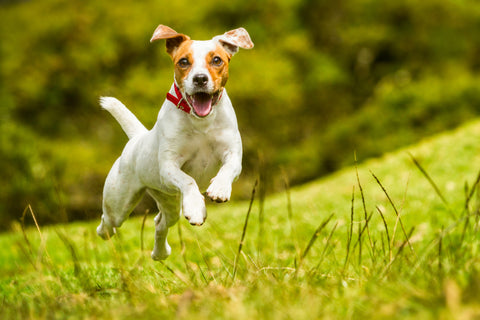
Life with rescue dogs is all about adventure and exploration, too! Regular physical activity and playtime are indispensable for your dog's health. They help maintain weight, improve muscle and joint health, and promote healthy digestion and cardiovascular function. But remember, exercise routines should cater to your dog’s individual needs.
Consider their age, breed, and health conditions while planning their exercise routine. Some activities you can consider are:
- Daily walks
- Jogging or running
- Playing fetch
- Going to the dog park
- Swimming
- Agility training
- Hiking
- Playing with interactive toys
Consult your veterinarian to determine your dog's appropriate level and type of exercise.
Mental stimulation through training and problem-solving activities is as important as physical exercise. Interactive toys, puzzle feeders, and obedience training can provide this mental exercise, especially for intelligent breeds. And let’s not forget about socialization. Gradual socialization within your dog’s comfort zone can alleviate anxiety and unwanted behavior, ensuring a well-adjusted canine companion.
How Petmate Supports You and Your New Furry Companion
Adopting a dog is filled with joy, challenges, and learning. And though it might seem overwhelming at first, remember that with patience, consistency, and lots of love, you’re sure to create a happy and comfortable life for your new furry friend.
To support you on this journey, Petmate is committed to enhancing the lives of pets and their owners. We offer everything from comfortable beds and engaging toys to grooming essentials and accessories to meet your pet's needs. Let Petmate help make your pet adoption journey smoother, ensuring your dog has the best life possible.
Previous article

Next article
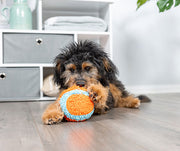
Related posts
View all-
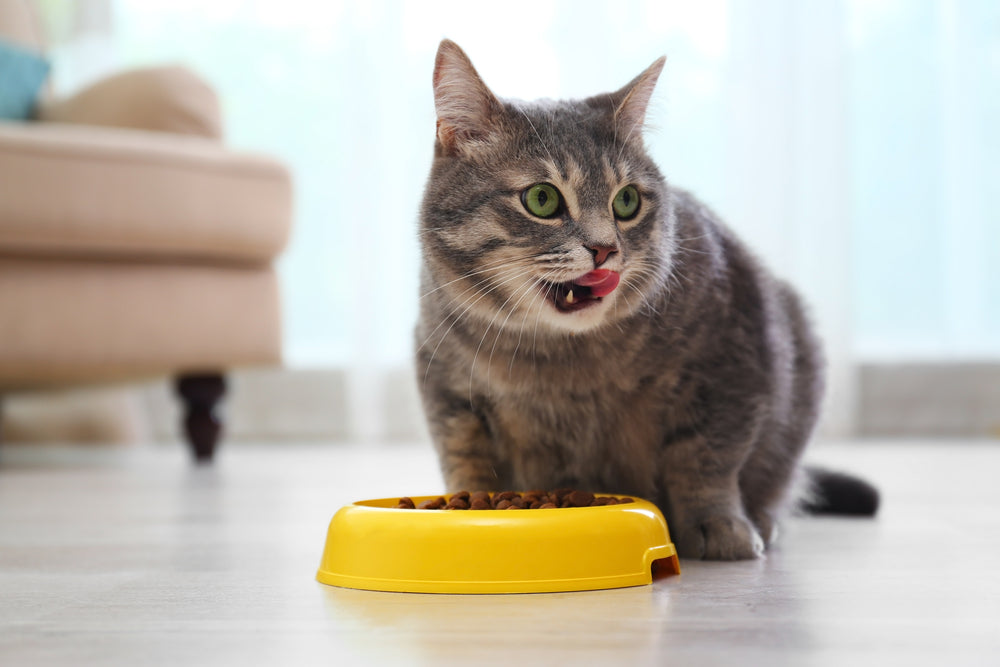
Wet Vs. Dry Cat Food: Which is Better?
As a caring cat owner, you always want the best for your furry friend, especially with their food. You typically have two choices: dry cat food in a bag or canned wet food. Whether you've just brought home a new kitty or are looking to transition to a new food, the decision process can be overwhelming, and understanding the impact of each on your cat's diet is essential. Read Article -
Celebrate National Pet Week: Fun Ideas to Celebrate with Your Pet
National Pet Week is right around the corner, so it's time to plan how you're going to celebrate! While we're sure you celebrate your pet all day every day... Read Article -

5 Simple Tips to Make Sure Your Cat Drinks Enough Water
Ensuring your cat stays hydrated is important, but it can be challenging since many cats don't drink enough water. Dehydration can lead to kidney disease and other health issues. Fortunately, you can encourage your cat to drink more with a few simple changes. Read Article -

How to Keep Your Cat Busy at Night (So You Can Sleep)
For many cat owners, the quest for a good night's sleep while keeping their feline friends content and engaged can seem like a never-ending battle. Cats, naturally more active at night or early in the morning, often disrupt your sleep schedules with nocturnal activity, whether through playful nature or seeking attention. Read Article




